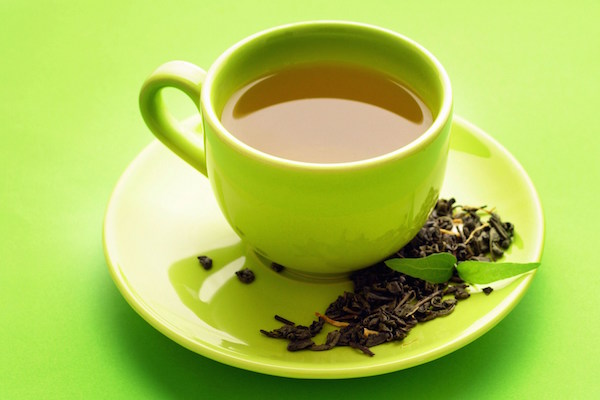Abstract
Globally, green tea is the second most popular used drink after the water. This survey was conducted at Shaheed Benazir Bhutto University Dir (Upper) Khyber Pakhtunkhwa Pakistan, in order to determine the perception and attitude of students toward green tea. A total of 45 male students were interviewed. Majority of the students use black tea (93%). The green tea is being used to reduce weight and cholesterol level.
Main Letter
Green tea made from the leaf of Camellia sinensis belongs to family Theaceae and itis the second most popular used drink after the water Cheng, 2004Vinson, 2000. Since ancient time green tea is being consumed, however, its consumption higher in China and Japan. Nowadays, the green tea is cultivated in Asia, Africa and South America Wink and van Wyk, 2004. The active polyphenolic compounds present in the green tea are epicatechin (EC), epicatechin-3-gallate (ECG), epigallocatechin (EGC) and epigallocatechin-3-gallate (EGCG) having anti-carcinogenic and antimutagenic activities Nawab and Farooq, 2015.
The survey was carried out at Shaheed Benazir Bhutto University Dir (Upper) Khyber Pakhtunkhwa Pakistan, in order to evaluate the perception and attitude of students toward green tea. A total of 45 male students were interviewed with the help of self-design and standard questionnaire.
Of the total interviewed participant, 93% use black tea while only 7% use green tea. Maximum numbers of participants use tea in winter season (67%) compared with summer (33%). Only 16% thought that green tea reduced weight while 84% does not know that green tea reduced weight. The result shows that, 47% of the respondents think that green tea has anti-infection potential while 53% thought that green tea having no anti-infection potential. Contributors obtained the knowledge about green tea from electronic media (29%), print media (13%) and other sources (58%).
A study conducted in Pakistan by Ahmad et al., 2014 reported that 77% individuals use fresh milk tea while 33% use green tea. Ahmad and Pandey, 2015 reported that 60.48% study participants use green tea while 39.52% use black tea in Nepal. According to our findings use of green tea is more in winter as compared to rest of the year, which is similar to another study. Green tea has great potential to reduce weight, risk of cardiovascular disease, antibacteria, antioxidant and antiviral activity (McKay and Blumberg, 2002). In Chinese traditional medicine, green tea has recommended for the treatment of general pain, headache, body aches, energizer and depression (Cabrera et al., 2006). Tea is very important beverage, which make brain relax during work stress and depression. The literature shows that green tea has numerous health benefits. It was concluded from the current study, a very less number of participant use green tea.
References
-
Pandey
Ahmad.
A Survey Based Study on Green Tea: Nepal. Martinia.
2015;
6
:
40-47
.
-
T.
Ahmad,
A.J.
Haroon,
S.K.
Sherwani,
S.
Ullah,
N.
Ullah,
M.A.
Jadoon,
M.
Waqar,
A.
Hussain,
A.
Majid,
A.
Khan.
Knowledge, Attitude and Practices of Local Populations of Union Council Koaz Bahram Dehri Pakistan Towards Green Tea (Camellia sinesis). Pak J Biotechnol Vol.
2014;
12
:
1-6
.
-
C.
Cabrera,
R.
Artacho,
R.
Giménez.
Beneficial Effects of Green Tea—A Review. Journal of the American College of Nutrition.
2006;
25
:
79-99
.
-
T.O.
Cheng.
Will green tea be even better than black tea to increase coronary flow velocity reserve?. The American journal of cardiology.
2004;
94
:
1223
.
-
D.L.
McKay,
J.B.
Blumberg.
The Role of Tea in Human Health: An Update. Journal of the American College of Nutrition.
2002;
21
:
1-13
.
-
A.
Nawab,
N.
Farooq.
Review on green tea constituents and its negative effects. 2015
.
-
J.A.
Vinson.
Black and green tea and heart disease: a review. Biofactors.
2000;
13
:
127-132
.
-
M.
Wink,
B.
van Wyk.
Medicinal plants of the world. Timber Press New York.
2004
.
Comments

Downloads
Article Details
Volume & Issue : Vol 3 No 07 (2016)
Page No.: 697-698
Published on: 2016-07-30
Citations
Copyrights & License

This work is licensed under a Creative Commons Attribution 4.0 International License.
Search Panel
Pubmed
Google Scholar
Pubmed
Google Scholar
Pubmed
Google Scholar
Pubmed
Search for this article in:
Google Scholar
Researchgate
- HTML viewed - 4162 times
- Download PDF downloaded - 1523 times
- View Article downloaded - 8 times
 Biomedpress
Biomedpress

